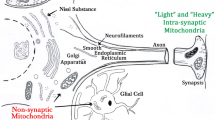Abstract
Chronic heart failure (CHF) modulates the activity of monoaminergic systems in the central nervous system (CNS). An increased dioxyphenylacetic acid/dopamine ratio and 5-oxyindoleacetic acid/serotonin ratio in the majority of the brain structures studied during CHF indicate the high activity of the dopamine and serotonin systems and their functional stress during the development of hypoxia-compensative processes aimed at the maintenance of the normal cerebral blood flow. However, if a convulsive seizure develops during CHF, it may result in the failure of compensatory and adaptive mechanisms, thus, leading to decreased levels of dopamine, serotonin, and their metabolites in most brain regions studied. These animals are also characterized by increased seizure readiness, which is not usually found in the postictal period in rats without heart pathologies. Hence, CHF prolongs the postictal changes in the brain, limits its capacity to recovery, which, in turn, builds a basis for further seizure development.
Similar content being viewed by others
References
Halaris, A., Int. Angiol., 2009, vol. 28, no. 2, pp. 92–99.
Fonyakin, A.V. and Geraskina, L.A., Atmosfera. Nervnye Bolezni, 2005, no. 2, pp. 2–7.
Simonenko, V.B. and Shirokov, E.A., Osnovy kardionevrologii (Rukovodstvo dlya vrachei) (Basic Cardioneurology, a Manual for Physicians), Moscow: Meditsina, 2001.
Kadykov, A.S., Manvelov, L.S., and Shakhparonova, N.V., Khronicheskie sosudistye zabolevaniya golovnogo mozga (distsirkulyatornaya entsefalopatiya) (Chronic Vascular Diseases of the Brain: Dyscirculatory Encephalopathy), Moscow: GEOTAR-Media, 2006.
Gulyaeva, N.V., Neirokhimiya, 2010, vol. 27, no. 2, pp. 102–108.
Clancy, R.R., Sharif, U., Ichord, R., Spray, T.L., Nicolson, S., Tabbutt, S., Wernovsky, G., and Gaynor, J.W., Epilepsia, 2005, vol. 46, no. 1, pp. 84–90.
Nilsen, K.B., Haram, M., Tangedal, S., Sandab, T., and Brodtkorb, E., Seizure, 2010, vol. 19, no. 3, pp. 291–295.
Semiokhina, A.F., Fedotova, I.B., and Poletaeva, I.I., Zh. Vyssh. Nervn. Deyat. im. I.P. Pavlova, 2006, vol. 56, no. 3, pp. 298–316.
Pintor, M., Mefford, I.N., Hutter, I.., Pocotte, S.L., Wyler, A.R., and Nadi, N.S., Synapse, 1990, vol. 5, no. 2, pp. 152–156.
Fedorov, V.N., Yartsev, A.V., and Danilova, O.V., Patol. Fiziol. Eksp. Ter., 2005, no. 3, pp. 7–9.
Fedorov, V.N., Nozdrachev, A.D., Sal’nikov, E.V., Sidorov, A.V., Yartsev, A.V., and Fateev, M.M., Vestn. SPbGU, Ser. 3., 2006, no. 2, pp. 103–107.
Mezhdunarodnye rekomendatsii po provedeniyu mediko-biologicheskikh issledovanii s ispol’zovaniem zhivotnykh, Lanimalogiya, 1993, no. 1, pp. 29–32.
Browning, R.A. and Mayeenert, E.W., Eur. J. Pharmacol., 1978, vol. 50, no. 5, pp. 91–101.
Bourne, W.M., Chin, L., and Picchioni, A.L., J. Pharmacol., 1972, vol. 24, no. 12, pp. 913–914.
Montepietra, S., Cattaneo, L., and Granella, F., Seizure, 2009, vol. 18, no. 5, pp. 379–381.
Tigaran, S., Mølgaard, H., McClelland, R., Dam, M., and Jaffe, A.S., Neurology, 2003, vol. 60, no. 3, pp. 492–495.
Chazov, E.I. and Kalenikova, E.I., Dokl. Akad. Nauk, 1996, vol. 348, no. 4, pp. 570–572.
Nissenbaum, L.K. and Zigmondt, M.T., Swed A.F., Abercrombie E.D, J. Neurosci., 1991, vol. 11, no. 5, pp. 1478–1484.
Bjönkman, S.T., Miller, S.M., Rose, S.E., Wallis, L.E.D., Burke, C., Stevenson, N.J., and Colditz, P.B., Neurosci., 2010, vol. 166, no. 1, pp. 157–167.
Sanchez, R.M. and Jensen, F.E., Modeling Hypoxia-Induced Seizures and Hypoxic Encephalopathy in the Neonatal Period Models of Seizures and Epilepsy, United States: Academic Press, 2006, pp. 323–331.
Freund, T.E., Vlinen, A., and Miettinen, P., Brain Res. Bull, 1992, vol. 28, no. 1, pp. 27–38.
Bertram, G., Kattsung, in Bazisnaya i klinicheskaya farmakologiya (Basic and Clinical Pharmacology), Moscow: Binom, 2007, vol. 2.
Bazyan, A.S., Zhulin, V.V., Karpova, M.N., Klishina, N.Yu., and Glebov, R.N., Zh. Vyssh. Nervn. Deyat. im. I.P. Pavlova, 1998, vol. 48, no. 1, pp. 135–142.
Psarropoulou, C., Matsokis, N., Angelatou, F., and Kostopoulos, G., Epilepsia, 1994, vol. 35, no. 2, pp. 12–17.
Mainardi, P., Leonardi, A., and Albano, C., Medical Hypotheses, 2008, vol. 70, no. 4, pp. 876–879.
Kryzhanovskii, G.N., Zhurn. Nevrol. i Psikhiatrii, 2002, no. 11, pp. 4–13.
Pshennikova, M.G., Ros. fiziol. zhurn. im. I.M. Sechenova, 2002, vol. 88, no. 4, pp. 485–495.
Pshennikova, M.G., Popkova, E.V., and Shimkovich, M.V., Usp. Fiziol. Nauk, 2003, vol. 34, no. 3, pp. 55–67.
Markus, C.R., Neuromolecular. Med., 2008, vol. 10, no. 4, pp. 247–258.
Idova, G.V., Cheido, M.A., and Devoino, L.V., Dokl. Biol. Sci., 2004, vol. 398, pp. 351–353.
Perveen, T., Zehra, S.F., and Haider, S., Pak. J. Pharm. Sci., 2003, vol. 16, no. 1, pp. 27–33.
Briones-Aranda, A., Rocha, L., and Picazo, O., Progr. Neuro-Psychopharmacol. Biolog. Psychiatry, 2005, vol. 29, no. 3, pp. 275–281.
Author information
Authors and Affiliations
Corresponding author
Additional information
Original Russian Text © M.L. Mamalyga, 2012, published in Neirokhimiya, 2012, Vol. 29, No. 1, pp. 45–51.
Rights and permissions
About this article
Cite this article
Mamalyga, M.L. Monoamine metabolism in the brain of rats with chronic heart failure of non-ischemic origin. Neurochem. J. 6, 38–43 (2012). https://doi.org/10.1134/S1819712411040118
Received:
Published:
Issue Date:
DOI: https://doi.org/10.1134/S1819712411040118



